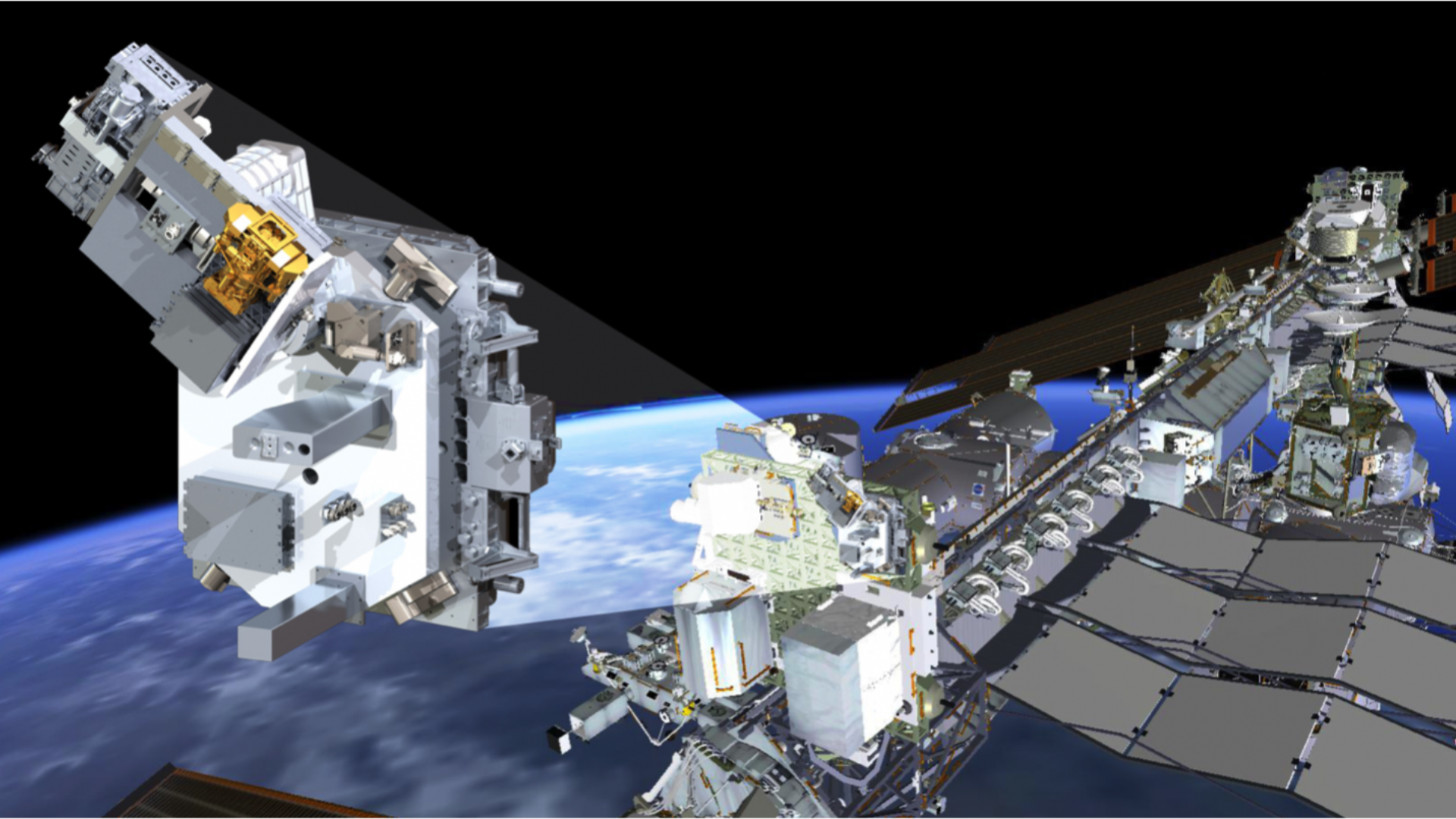TSIS-1
Total and Spectral Solar Irradiance Sensor

Overview
The Sun is the predominant source of energy input to Earth. Solar radiation ensures the maintenance of the appropriate range of temperatures for the sustenance of life on Earth, by driving land surface heating, plant productivity, and oceanic and atmospheric circulations. Because of the Sun’s dominant influence on Earth’s function, it is important to accurately measure the solar input to Earth, or solar irradiance. Measurement of the total solar irradiance (TSI) is essential for quantifying Earth’s energy budget.
NASA's Total and Spectral Solar Irradiance Sensor, or TSIS-1, is a mission measuring the Sun's energy input to Earth. Various satellites have captured a continuous record of this solar energy input since 1978. TSIS-1 sensors advance previous measurements, enabling scientists to study the Sun’s natural influence on Earth’s ozone layer, atmospheric circulation, clouds and ecosystems. These observations are essential for a scientific understanding of the effects of solar variability on the Earth system. TSIS-1 launched Dec. 15, 2017, on a SpaceX Falcon 9, for placement on the International Space Station.
TSIS-1 Instruments
Solar irradiance is one of the longest and most fundamental of all climate data records derived from space-based observations. TSIS-1 is a dual-instrument package that can acquire solar irradiance measurements from the International Space Station for five years. TSIS-1 provides critical data in determining the natural forcing of the climate system and will ensure the continuity of the solar irradiance climate data record.
TSIS-1 includes the following two instruments:
- The Total Irradiance Monitor (TIM) instrument: measures total solar irradiance (TSI) that is incident at the outer boundaries of the atmosphere.
- The Spectral Irradiance Monitor (SIM) instrument: measures solar spectral irradiance (SSI) from 200 nanometers to 2,400 nanometers (96% of the TSI).
The TIM and SIM instruments are designed similarly to those currently flying on the Solar Radiation and Climate Experiment (SORCE) satellite, which launched in 2003 and is now more than six years beyond its prime-mission lifetime. TSIS-1 is required to continue the 38-year record of TSI, extend the newer 14-year record of SSI, and to provide highly accurate, stable, and continuous observations that are critical to understanding the present climate epoch and for predicting future climate.
TSIS-1 Quick Facts
Onboard and operating from the International Space Station
- Dimensions: 4 feet x 4 feet x 8 feet tall (1.2 x 1.2 x 2.4 m); it fits within a 4-foot cube on launch but transforms to almost twice that size on orbit.
- Weight: 800 pounds (363 kilograms)
- Science Goals: Monitor the radiant energy from the Sun and how that energy is distributed over many wavelengths. TSIS-1 will provide the most accurate measurements of sunlight and continue the long-term climate data record
- Science Sensors: Total Irradiance Monitor (TIM) and Spectral Irradiance Monitor (SIM) built by the Laboratory for Atmospheric and Space Physics at the University of Colorado, Boulder
- Mission Lifetime: The instrument has a design life of 5 years.
- ISS Operations Center: NASA's Johnson Space Center in Houston
- ISS Space Station Location: ExPRESS Logistics Carrier #3, position #5.
- Mission Target: Low Earth orbit
- Launch Location: Cape Canaveral Air Force Station
- Launch Vehicle: Space X Falcon 9 and Dragon capsule
- Mission Management: NASA’s Goddard Space Flight Center has overall responsibility for the development and operation of TSIS-1. Under contract with NASA, the Laboratory for Atmospheric and Space Physics at the University of Colorado Boulder, built TSIS-1 and gathers the science data. The Goddard Earth Science Data and Information Services Center distributes the data to the scientific community.
Total Solar Irradiance and Solar Spectral Irradiance
During periods of peak activity when sunspots, solar flares and coronal mass ejections are more common, the sun emits slightly more energy than during periods of low activity. The amount of energy that strikes Earth’s atmosphere, called total solar irradiance (TSI), fluctuates by about 0.1 percent over the course of the Sun's 11-year cycle.
TSIS-1 makes two key measurements: total solar irradiance and solar spectral irradiance (SSI), the distribution of the Sun’s energy input across ultraviolet, visible and infrared wavelengths of light. TSI measurements are needed to quantify the solar variations in the total amount of energy input to Earth. SSI measurements are also vital because different wavelengths of light are absorbed by different parts of the atmosphere.
TSI is required for establishing Earth’s total energy input, while SSI is needed to understand how the atmosphere responds to changes in the sun’s output.
TSIS-1 Media Resources
Reporters with questions about NASA's TSIS-1 should contact:
Jacob Richmond
Public Affairs Officer, Earth Science
Goddard Space Flight Center, Greenbelt, MD
301-286-6255
Other resources:
